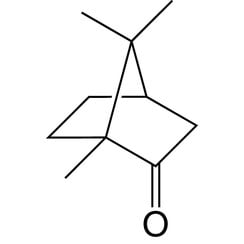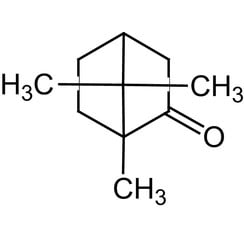You have no items in your shopping cart
Camphor
Camphor is a waxy, flammable, transparent solid with a strong aroma. It is a terpenoid with the chemical formula C10H16O. It is found in the wood of the camphor laurel (Cinnamomum camphora), a large evergreen tree found in Asia (particularly in Sumatra and Borneo islands, Indonesia) and also of the unrelated kapur tree (Dryobalanops sp.), a tall timber tree from the same region. It also occurs in some other related trees in the laurel family, notably Ocotea usambarensis. Rosemary leaves (Rosmarinus officinalis) contain 0.05 to 0.5% camphor, while camphorweed (Heterotheca) contains some 5%. A major source of camphor in Asia is camphor basil (the parent of African blue basil). Camphor can also be synthetically produced from oil of turpentine.
The molecule has two possible enantiomers as shown in the structural diagrams. The structure on the left is the naturally occurring (R)-form, while its mirror image shown on the right is the (S)-form.
It is used for its scent, as an ingredient in cooking (mainly in India), as an embalming fluid, for medicinal purposes, and in religious ceremonies.


